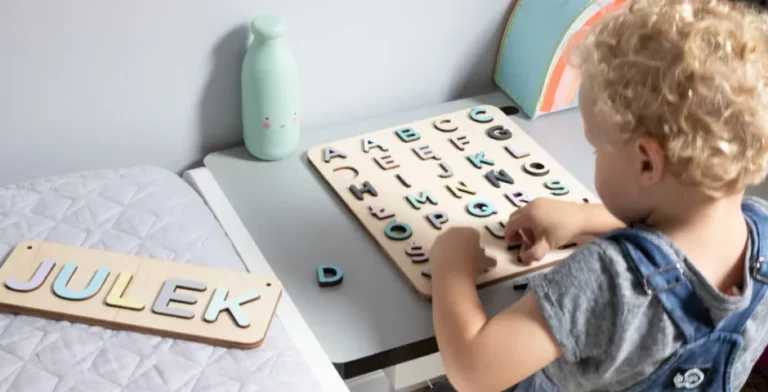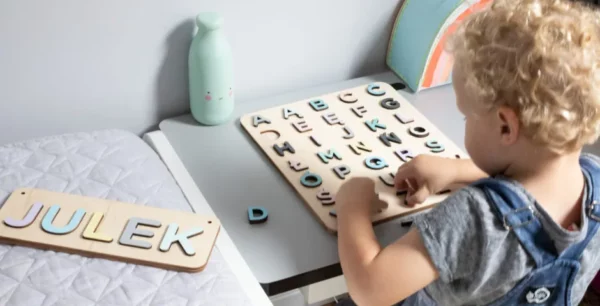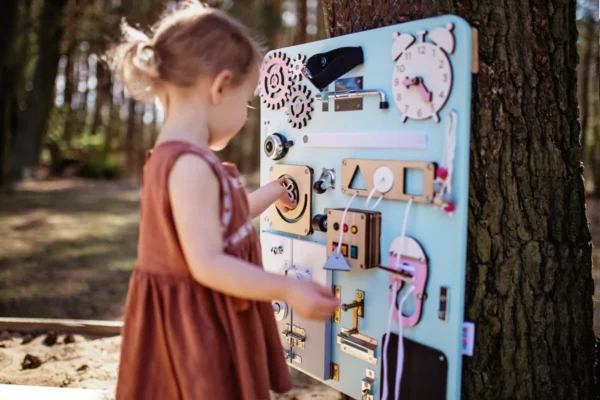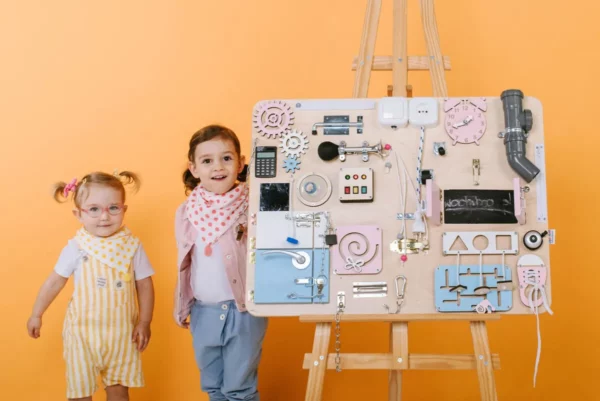How to practise concentration in a child? 3 simple ways to teach your child to focus
Concentration of attention – essential not only in adulthood, but from the very first moments of a young person. Playing, learning or practising in the nursery or kindergarten – all activities require focus. How to develop a child’s concentration?
Focus is otherwise known as the ability to maintain attention, which helps in the implementation of actions. It makes it quicker and easier for us to complete a task and achieve our goal. The art of concentration can be developed, like anything – preferably at a young age, when the human organism absorbs knowledge perfectly and is particularly susceptible to development. Concentration exercises can be done with a toddler as young as a few months old.
A great play and concentration exercise for infants is the seemingly simple activity of looking at pictures. By presenting the child with a simple booklet of graphics in contrasting colours, we teach them to keep their eyes on one point. It is important that the object is not closer to the toddler’s face than approx. 30 cm. Another, slightly more challenging way to exercise eyesight is to move an object in front of the child at a slow pace. It can be a teddy bear, a block or a ball. It is important that the toddler manages to move their gaze behind a given point and tries to move their head.
Parents of children who can already stand or walk on their own are well aware that such toddlers like to throw whatever is at hand. What about using it for exercise? A throw that has a purpose is a guarantee of maximum focus for the toddler. For this task, the Woobiboo Standard board is perfect, equipped with a small tube into which curious tinkerers can freely drop a ball, thus practicing psychomotor skills. Other elements of manipulative boards that undoubtedly capture a child’s attention, even the youngest ones, include, among others, a trumpet, colourful lights, and a bell.
It is well known that toddlers love to stack and build. Such a process teaches patience and requires a lot of commitment from them. Matching the right pieces is a real lesson in patience and effort for the little thinker. Use Woobiboo wooden puzzles to practice concentration with your child. They are a response to the needs of home education. A colourful alphabet, a clock with moving hands, or a personalised name puzzle – the fun involves arranging, rearranging, and matching the elements. The products not only require the ability to maintain attention, but also allow them to learn letters, numbers and even new words.
The art of concentration helps in everyday life and makes many responsibilities easier. It is worth practising your child’s focus, which will support their development and produce results in the years to come. Simple methods to maintain attention practiced in the comfort of home will not only enhance the efficiency of the toddler but also bring many smiles, both on the child’s and parent’s face.





